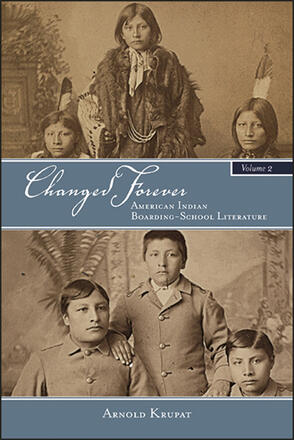
Changed Forever, Volume II
American Indian Boarding-School Literature
Alternative formats available from:
The second volume of the first in-depth study of a range of literature written by Native Americans who attended government-run boarding schools.
Description
After a theoretical and historical introduction to American Indian boarding-school literature, Changed Forever, Volume II examines the autobiographical writings of a number of Native Americans who attended the federal Indian boarding schools. Considering a wide range of tribal writers, some of them well known—like Charles Eastman, Luther Standing Bear, and Zitkala-Sa—but most of them little known—like Walter Littlemoon, Adam Fortunate Eagle, Reuben Snake, and Edna Manitowabi, among others—the book offers the first wide-ranging assessment of their texts and their thoughts about their experiences at the schools.
Arnold Krupat is Professor Emeritus, Sarah Lawrence College and the author of many books, including Changed Forever, Volume 1: American Indian Boarding-School Literature and "That the People Might Live": Loss and Renewal in Native American Elegy.
Reviews
"…Krupat's Changed Forever has established a place of significance in any collection that seeks to explore knowledge, reconciliation, and the stories of boarding school histories." — Western American Literature
"Krupat's volumes, almost needless to say, constitute a vital contribution to resuscitating 'the thousands of Indian voices who spoke the breath of boarding-school life.'" — American Indian Quarterly
Praise for Changed Forever, Volume I
"Both Krupat's introduction and his analyses throughout show an impressive mastery of the field … Krupat's analytical skills truly shine … I found Changed Forever both refreshing and challenging. Highly recommended." — John Gram, author of Education at the Edge of Empire: Negotiating Pueblo Identity in New Mexico's Indian Boarding Schools